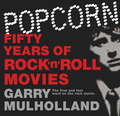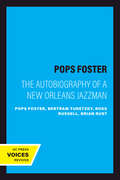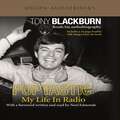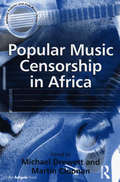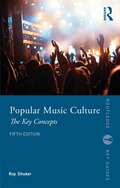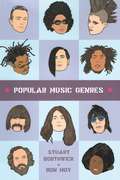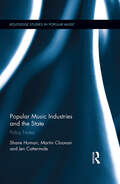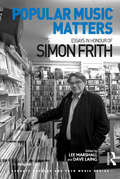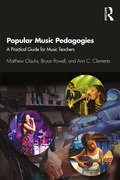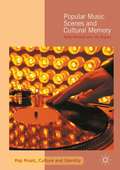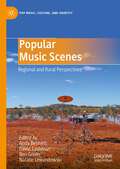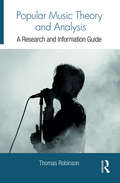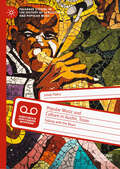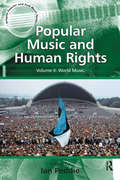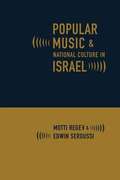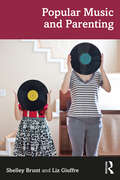- Table View
- List View
Pop Star Goddesses: And How to Tap Into Their Energies to Invoke Your Best Self
by Jennifer Keishin ArmstrongA compendium of thirty-five incredible female pop stars whose energies, virtues, and vices make them the ideal role models for our age—powerful women who can teach us all how to discover our own inner goddess.We are living in the age of the music goddess: Beyoncé. Lady Gaga. Taylor Swift. Katy Perry. Britney. Nicki Minaj. Cardi B. Pink. Madonna. Rihanna. Gwen Stefani. Alicia Keys. Kelly Clarkson. Never before have so many women dominated their industry and pop culture itself with such creativity, passion, and force. Visionary and ferociously talented, these women are reshaping our society and our lives. In this stunningly designed compendium, Jennifer Armstrong offers an intimate, up-close look at thirty-five of pop music’s most revered goddesses, analyzing their performances, songs, videos, interviews, social media, activism, and personal lives to illuminate their significance for both critics and fans. These divas post astounding album sales, enjoy millions of radio plays, YouTube views, and social media followings, and sell out stadiums. While we are awed and inspired by their success, we worship them for so much more. Beyoncé’s work ethic. Nicki Minaj’s no-bullshit attitude. Taylor Swift’s relatability. Pink’s sense of social justice. Jennifer Lopez’s transformation from “Jenny from the block” to fashion icon. Each of these goddesses speaks to us in her own unique way. Beyoncé is our superhuman alter ego; Britney is our survival instinct. Armstrong pairs each pop star goddess with a corresponding goddess from ancient cultures, and offers advice on how to invoke the pop star goddess’s energy in your own life, providing journal prompts and a Power Song List that allows you harness the power of a particular pop goddess’s energy when you need it. Filled with information, advice, insights, playlists, and forty gorgeous color illustrations, Pop Star Goddess will help you tune in and turn on your own divine energy. The Pop Star Goddesses are: Beyoncé, Britney Spears, Kelly Clarkson, Taylor Swift, M.I.A., Nicki Minaj, Cardi B, Lady Gaga, Carla Bruni, Pink, JLo, Kesha, Rihanna, Janelle Monae, Gwen Stephani, Alicia Keys, Katy Perry, Demi Lovato, Jennifer Hudson, Mariah Carey, Adele, Missy Elliott, Shakira, Solange, Miranda Lambert, Celine Dion, Sia, Queen Latifah, SZA, Kacey Musgraves, Mary J. Blige, Christina Aguilera, Laura Jane Grace, Ariana Grande, Carly Rae Jepsen.
PopMaster: The official music quiz book from Ken Bruce’s iconic radio and Channel 4 TV show
by Ken Bruce Phil Swern Neil MynersThe official music quiz book from the iconic Greatest Hits Radio and Channel 4 TV show, with 1,500 new questions - get ready to take on the ultimate PopMaster challenge!DO YOU STOP FOR POPMASTER?Test your pop music knowledge with the official PopMaster quiz book, covering songs and artists in the UK music chart from the 1950s through to the present day.Featuring 1,500 brand new questions and brain teasers from all your favourite segments, including:general knowledgeanagrams of song titlesmissing wordswhat’s the connectionsame title but different songwho am I?With questions for music lovers of all ages and tastes, this is the ultimate music quiz book, covering artists ranging from ABBA to ZZ Top and everything in between.Are you a PopMaster Champion or will you be 'one year out'?
Popcorn: Fifty Years of Rock 'n' Roll Movies
by Garry MulhollandHugely acclaimed author of THIS IS UNCOOL and FEAR OF MUSIC turns his attention to rock 'n' roll movies.From BLACKBOARD JUNGLE to QUADROPHENIA, from 8 MILE to ABBA: THE MOVIE, no one has seriously looked at the strange phenomenon that is the rock 'n' roll movie. Garry Mulholland turns his focus away from classic records to the best, the worst, the weird and the completely deranged from the world of the rock movie. Part serious critical appreciation, part celebration of B-movie trash, Garry Mulholland's inclusive approach is the key to his success. He is as comfortable deconstructing the likes of PERFORMANCE, GIMME SHELTER or JUBILEE as he is celebrating FOOTLOOSE or JAILHOUSE ROCK. As he writes: '... Anyone who rejects the joy that the likes of GREASE or DIRTY DANCING or FAME have brought millions of people without even attempting to engage with why such unapologetic trash works can't really be that interested in filmgoers at all.'
Popcorn: Fifty Years of Rock 'n' Roll Movies
by Garry MulhollandHugely acclaimed author of THIS IS UNCOOL and FEAR OF MUSIC turns his attention to rock 'n' roll movies.From BLACKBOARD JUNGLE to QUADROPHENIA, from 8 MILE to ABBA: THE MOVIE, no one has seriously looked at the strange phenomenon that is the rock 'n' roll movie. Garry Mulholland turns his focus away from classic records to the best, the worst, the weird and the completely deranged from the world of the rock movie. Part serious critical appreciation, part celebration of B-movie trash, Garry Mulholland's inclusive approach is the key to his success. He is as comfortable deconstructing the likes of PERFORMANCE, GIMME SHELTER or JUBILEE as he is celebrating FOOTLOOSE or JAILHOUSE ROCK. As he writes: '... Anyone who rejects the joy that the likes of GREASE or DIRTY DANCING or FAME have brought millions of people without even attempting to engage with why such unapologetic trash works can't really be that interested in filmgoers at all.'
Pops Foster: The Autobiography of a New Orleans Jazzman
by Pops FosterThis title is part of UC Press's Voices Revived program, which commemorates University of California Press’s mission to seek out and cultivate the brightest minds and give them voice, reach, and impact. Drawing on a backlist dating to 1893, Voices Revived makes high-quality, peer-reviewed scholarship accessible once again using print-on-demand technology. This title was originally published in 1971.This title is part of UC Press's Voices Revived program, which commemorates University of California Press’s mission to seek out and cultivate the brightest minds and give them voice, reach, and impact. Drawing on a backlist dating to 1893, Voices Revived</DIV
Poptastic!: My Life in Radio
by Tony BlackburnTony Blackburn is probably one of the most recognisable disc jockeys working in Britain today, and is always busy doing what he does best - playing music to listeners. With Radio One celebrating its 40th anniversary this year, Tony feels the time is right to commemorate his own anniversary, and look back on the time he has spent in radio and the media. The days spent as a radio pirate, to becoming the number one DJ in the UK for the best part of a decade. The stars he befriended, the rivalries in radio he endured, the friendships made, and broken, all will be told in his candid style. Much as John Peel's book was a reflection of one style of DJing, so will this book be for Tony's unique brand of playing and enjoying music. Much derided by some comedians, but very much still going strong, and ever popular.(p) 2007 Orion Publishing Group
Popular American Recording Pioneers: 1895-1925
by Frank Hoffmann B Lee Cooper Tim GracykEncounter the trailblazers whose recordings expanded the boundaries of technology and brought “popular” music into America's living rooms!Popular American Recording Pioneers: 1895--1925 (winner of the 2001 Association for Recorded Sound Collections Award of Excellence in Historical Recorded Sound Research) covers the lives and careers of over one hundred musical artists who were especially important to the recording industry in its early years. Here are the men and women who brought into American homes the hits of the day--Tin Pan Alley numbers, Broadway show tunes, ragtime, parlor ballads, early jazz, and dance music of all kinds.Popular American Recording Pioneers: 1895--1925 compiles rare information that was scattered in hundreds of record catalogs, hobbyist magazines, newspaper clippings, phonograph trade journals, and other sources. Look no further! This volume is the ultimate resource on the subject!You will increase your knowledge in these areas: the recording industry's formative years artists’personalities and musical styles popular music history history of recording technologyPopular American Recording Pioneers: 1895--1925 provides a unique “who's who” approach to popular music history. It is the definitive work on the music that was popular during America's coming of age. No music historian should be without this volume.
Popular Classics for Violin and Piano (Dover Chamber Music Scores)
by Bodewalt Lampe Stephanie ChaseThis rare collection features violin parts with separate piano reductions of works by Brahms, Dvorak, Handel, Herbert, Saint-Saëns, Schubert, Schumann, Mendelssohn, Massenet, Elgar, and others. Contents include Dvorak's Humoresque, Anton Rubinstein's Melody in F, Mendelssohn's Spring Song, Schubert's Serenade, Hungarian Dance No. 5 by Brahms, Love's Greeting by Elgar, and Handel's Largo from Xerxes.
Popular Music Censorship in Africa (Ashgate Popular and Folk Music Series)
by Martin CloonanIn Africa, tension between freedom of expression and censorship in many contexts remains as contentious, if not more so, than during the period of colonial rule which permeated the twentieth century. Over the last one hundred years popular musicians have not been free to sing about whatever they wish to, and in many countries they are still not free to do so. This volume brings together the latest research on censorship in colonial and post-colonial Africa, focusing on the attempts to censor musicians and the strategies of resistance devised by musicians in their struggles to be heard. For Africa, the twentieth century was characterized first and foremost by struggles for independence, as colonizer and colonized struggled for territorial control. Throughout this period culture was an important contested terrain in hegemonic and counter-hegemonic struggles and many musicians who aligned themselves with independence movements viewed music as an important cultural weapon. Musical messages were often political, opposing the injustices of colonial rule. Colonial governments reacted to counter-hegemonic songs through repression, banning songs from distribution and/or broadcast, while often targeting the musicians with acts of intimidation in an attempt to silence them. In the post-independence era a disturbing trend has occurred, in which African governments have regularly continued to practise censorship of musicians. However, not all attempts to silence musicians have emanated from government, nor has all contested music been strictly political. Religious and moral rationale has also featured prominently in censorship struggles. Both Christian and Muslim fundamentalism has led to extreme attempts to silence musicians. In response, musicians have often sought ways of getting their music and message heard, despite censorship and harassment. The book includes a special section on case studies that highlight issues of nationality.
Popular Music Culture: The Key Concepts (Routledge Key Guides)
by Roy ShukerNow in its fifth edition, this popular A–Z student reference book provides a comprehensive survey of key ideas and concepts in popular music culture, examining the social and cultural aspects of popular music. Fully revised with extended coverage of the music industries, sociological concepts and additional references to reading, listening and viewing throughout, the new edition expands on the foundations of popular music culture, tracing the impact of digital technology and changes in the way in which music is created, manufactured, marketed and consumed. The concept of metagenres remains a central part of the book: these are historically, socially, and geographically situated umbrella musical categories, each embracing a wide range of associated genres and subgenres. New or expanded entries include: Charts, Digital music culture, Country music, Education, Ethnicity, Race, Gender, Grime, Heritage, History, Indie, Synth pop, Policy, Punk rock and Streaming. Popular Music Culture: The Key Concepts is an essential reference tool for students studying the social and cultural dimensions of popular music.
Popular Music Fandom: Identities, Roles and Practices (Routledge Studies in Popular Music)
by Mark DuffettThis book explores popular music fandom from a cultural studies perspective that incorporates popular music studies, audience research, and media fandom. The essays draw together recent work on fandom in popular music studies and begin a dialogue with the wider field of media fan research, raising questions about how popular music fandom can be understood as a cultural phenomenon and how much it has changed in light of recent developments. Exploring the topic in this way broaches questions on how to define, theorize, and empirically research popular music fan culture, and how music fandom relates to other roles, practices, and forms of social identity. Fandom itself has been brought center stage by the rise of the internet and an industrial structure aiming to incorporate, systematize, and legitimate dimensions of it as an emotionally-engaged form of consumerism. Once perceived as the pariah practice of an overly attached audience, media fandom has become a standardized industrial subject-position called upon to sell box sets, concert tickets, new television series, and special editions. Meanwhile, recent scholarship has escaped the legacy of interpretations that framed fans as passive, pathological, or defiantly empowered, taking its object seriously as a complex formation of identities, roles, and practices. While popular music studies has examined some forms of identity and audience practice, such as the way that people use music in daily life and listener participation in subcultures, scenes and, tribes, this volume is the first to examine music fans as a specific object of study.
Popular Music Genres: An Introduction (Edinburgh University Press Ser.)
by Ron Moy Stuart BorthwickAn accessible introduction to the study of popular music, this book takes a schematic approach to a range of popular music genres, and examines them in terms of their antecedents, histories, visual aesthetics, and sociopolitical contexts. Within this interdisciplinary and genre-based focus, readers will gain insights into the relationships between popular music, cultural history, economics, politics, iconography, production techniques, technology, marketing, and musical structure.
Popular Music Heritage: Places, Objects, Images and Texts (Pop Music, Culture and Identity)
by Andy BennettThis book critically discusses the significance of popular music heritage as a means of remembering and re-presenting rock and pop artists, their music and their place in the culture of contemporary society. Since the mid-1990s, the contribution of popular music to the shaping of contemporary history and heritage has increasingly been acknowledged. In the same period, exhibitions of popular music related artefacts have become more commonplace in museums, and facilities dedicated to the celebration of popular music history and heritage, such as the Rock and Roll Hall of Fame, have opened their doors. Popular music heritage has found other mediums of expression too. There is now a significant popular music heritage media, including books, magazines, films and television series. Fans collect and display their own mementos, while the live performances of tribute bands and classic albums fulfill an increasing desire for the live spectacle of popular music heritage. This book will be crucial reading for established scholars as well as postgraduate and undergraduate students studying popular music heritage.
Popular Music Industries and the State: Policy Notes (Routledge Studies in Popular Music)
by Martin Cloonan Shane Homan Jennifer CattermoleThis volume studies the relationships between government and the popular music industries, comparing three Anglophone nations: Scotland, New Zealand and Australia. At a time when issues of globalization and locality are seldom out of the news, musicians, fans, governments, and industries are forced to reconsider older certainties about popular music activity and their roles in production and consumption circuits. The decline of multinational recording companies, and the accompanying rise of promotion firms such as Live Nation, exemplifies global shifts in infrastructure, profits and power. Popular music provides a focus for many of these topics—and popular music policy a lens through which to view them. The book has four central themes: the (changing) role of states and industries in popular music activity; assessment of the central challenges facing smaller nations competing within larger, global music-media markets; comparative analysis of music policies and debates between nations (and also between organizations and popular music sectors); analysis of where and why the state intervenes in popular music activity; and how (and whether) music fits within the ‘turn to culture’ in policy-making over the last twenty years. Where appropriate, brief nation-specific case studies are highlighted as a means of illuminating broader global debates.
Popular Music Matters: Essays in Honour of Simon Frith (Ashgate Popular and Folk Music Series)
by Lee Marshall Dave LaingSimon Frith has been one of the most important figures in the emergence and subsequent development of popular music studies. From his earliest academic publication, The Sociology of Rock (1978), through to his recent work on the live music industry in the UK, in his desire to ’take popular music seriously’ he has probably been cited more than any other author in the field. Uniquely, he has combined this work with a lengthy career as a music critic for leading publications on both sides of the Atlantic. The contributions to this volume of essays and memoirs seek to honour Frith’s achievements, but they are not merely ’about Frith’. Rather, they are important interventions by leading scholars in the field, including Robert Christgau, Antoine Hennion, Peter J. Martin and Philip Tagg. The focus on ’sociology and industry’ and ’aesthetics and values’ reflect major themes in Frith’s own work, which can also be found within popular music studies more generally. As such the volume will become an essential resource for those working in popular music studies, as well as in musicology, sociology and cultural and media studies.
Popular Music Pedagogies: A Practical Guide for Music Teachers
by Bryan Powell Matthew Clauhs Ann C ClementsPopular Music Pedagogies: A Practical Guide for Music Teachers provides readers with a solid foundation of playing and teaching a variety of instruments and technologies, and then examines how these elements work together in a comprehensive school music program. With individual chapters designed to stand independently, instructors can adapt this guide to a range of learning abilities and teaching situations by combining the pedagogies and methodologies presented. This textbook is an ideal resource for preservice music educators enrolled in popular music education, modern band, or secondary general methods coursework and K-12 music teachers who wish to create or expand popular music programs in their schools. The website includes play-alongs, video demonstrations, printed materials, and links to useful popular music pedagogy resources.
Popular Music Scenes and Cultural Memory
by Andy Bennett Ian RogersThis volume explores the ways in which music scenes are not merely physical spaces for the practice of collective musical life but are also inscribed with and enacted through the articulation of cultural memory and emotional geography. The book draws on empirical data collected in cites throughout Australia. In terms of understanding the relationship between music scenes and participants, much of the existing popular music literature tends to avoid one key aspect of scene: its predominant past-tense and memory-based nature. Nascent music scenes may be emergent and on-going but their articulation in the present is often based on past events, ideas and histories. There is a noticeable gap between the literature concerning popular music ethnography and the growing body of work on cultural memory and emotional geography. This book is a study of the conceptual formation and use of music scenes by participants. It is also an investigation of the structures underpinning music scenes more generally.
Popular Music Scenes: Regional and Rural Perspectives (Pop Music, Culture and Identity)
by Ben Green Andy Bennett Natalie Lewandowski David CashmanThis book examines regional and rural popular music scenes in Europe, Asia, North America and Australia. The book is divided into four parts. Part 1 will focus on the spatial aspects of regional popular music scenes and how place and locality inform the perceptions and discourses of those involved in such scenes. Part 2 focuses on the technologies and forms of distribution whereby regional and rural popular music scenes exist and, in many cases co-exist in forms of trans-local connection with other scenes. Part 3 considers the importance of collective memory in the way that regional and rural popular music scenes are constructed in both the past and the present. Part 4 examines themes of industry and policy, in relation to culture and music, as these impact on the nature and identity of rural and regional popular music scenes.
Popular Music Theory and Analysis: A Research and Information Guide (Routledge Music Bibliographies)
by Thomas RobinsonPopular Music Theory and Analysis: A Research and Information Guide uncovers the wealth of scholarly works dealing with the theory and analysis of popular music. This annotated bibliography is an exhaustive catalog of music-theoretical and musicological works that is searchable by subject, genre, and song title. It will support emerging scholarship and inquiry for future research on popular music.
Popular Music Will Not Save Us: Capitalism and Music Education (Counterpoints: Music and Education)
by Lauren K. RichermeIn today's globalized landscapes, both traditional and progressive K–12 music education practices, including those associated with popular music, can further capitalism-related inequities. In this context, music educators and students might consider how they position themselves and their music-making practices in relation to capitalist aims and processes and confront the more unethical aspects of capitalism.Popular Music Will Not Save Us challenges music educators to rethink their philosophical stances in the face of contemporary capitalist values and explores the intersection of music education and globalized capitalism, unveiling how certain practices exacerbate material inequities and erode social responsibility. As author Lauren Kapalka Richerme unravels the complexities of music education, her analysis sheds light on how prevalent practices can inadvertently uphold capitalist ideals and reinforce individualism, unceasing accumulation, and precarity in the workforce. Given that no musical genre inherently challenges problematic aspects of capitalism, Richerme proposes that music educators instead focus on affective flows, or the circulation of sensations within pedagogical spaces, and consider four alternative positionalities: thriving within, surviving under, resisting, and challenging capitalism.Popular Music Will Not Save Us advocates for a shift away from capitalistic individualism and inequities and toward a more equitable, affective pedagogical mode. Now is the time to transcend traditional boundaries and embrace a new paradigm that prioritizes social impact over commercial gain.
Popular Music and Culture in Austin, Texas: Talking with the Blues (Palgrave Studies in the History of Subcultures and Popular Music)
by Josep PedroThis book explores the blues tradition through a collective dialogue with significant musicians and producers of the Austin blues scene. Based on an ethnography in the singular capital of Texas, the self-proclaimed live music capital of the world, it explores the local blues scene through in-depth interviews that reveal intimate bonds between popular music, culture, identity, race, politics, the city and the music industry. Through the voices and experiences of 15 protagonists, readers are introduced to multiple aspects of blues lives, including music-making, style, identity, and the changing landscape of the Austin scene. While this oral history informs about particular biographies, it also delves into larger processes around popular music, culture and race, such as Jim Crow segregation, the Civil Rights era, international touring and gentrification. The book's subtitle assumes an important metaphor in regards to blues artists and the blues: that talking with blues artists is like talking with the blues; that meeting them is a way of meeting the blues. The implication is that blues artists not only form part of the tradition but they also embody the blues tradition with their lives and works, with their music, style, bodies, language, stories, and fashion. Thus, in this scene and book, the interviewees are the blues. Representatives of a contemporary music scene, these musicians and producers generally reveal an eclectic understanding of blues music, with connections to gospel, jazz, rhythm & blues, rock, soul-funk, and hip-hop. The conversations took place between 2010 and 2023, mostly face-to-face in Austin but also online and face-to-face in Madrid (Spain), where some of the musicians have performed. All of the protagonists were followed and observed closely within the everyday reality of the Austin music scene, yet the book also shows how the scene connects with many other places, including Mississippi, Houston, Memphis, New York or Madrid, through the biographies, tours and migrations of the protagonists.
Popular Music and Human Rights: World Music
by Ian PeddiePopular music has long understood that human rights, if attainable at all, involve a struggle without end. The right to imagine an individual will, the right to some form of self-determination and the right to self-legislation have long been at the forefront of popular music's approach to human rights. At a time of such uncertainty and confusion, with human rights currently being violated all over the world, a new and sustained examination of cultural responses to such issues is warranted. In this respect music, which is always produced in a social context, is an extremely useful medium; in its immediacy music has a potency of expression whose reach is long and wide. Contributors to this significant volume cover artists and topics such as Billy Bragg, punk, Fun-da-Mental, Willie King and the Liberators, Hedwig and the Angry Inch, the Anti-Death Penalty movement, benefit concerts, benefit albums, Gil Scott-Heron, Bruce Springsteen, Wounded Knee and Native American political resistance, Tori Amos, Joni Mitchell, as well as human rights in relation to feminism. A second volume covers World Music.
Popular Music and National Culture in Israel
by Motti Regev Edwin SeroussiA scholarly book on popular music's role in the national identity and political culture in Israel.
Popular Music and Parenting
by Liz Giuffre Shelley BruntPopular Music and Parenting explores the culture of popular music as a shared experience between parents, carers and young children. Offering a critical overview of this topic from a popular music studies perspective, this book expands our assumptions about how young audiences and caregivers engage with music together. Using both case studies and wider analysis, the authors examine music listening and participation between children and parents in both domestic and public settings, ranging across children's music media, digital streaming, live concerts, formal and informal popular music education, music merchandising and song lyrics. Placing young children’s musical engagement in the context of the music industry, changing media technologies, and popular culture, Popular Music and Parenting paints a richly interdisciplinary picture of the intersection of popular music with the parent–child relationship.
Popular Music and Parenting
by Liz Giuffre Shelley BruntPopular Music and Parenting explores the culture of popular music as a shared experience between parents, carers and young children. Offering a critical overview of this topic from a popular music studies perspective, this book expands our assumptions about how young audiences and caregivers engage with music together. Using both case studies and wider analysis, the authors examine music listening and participation between children and parents in both domestic and public settings, ranging across children's music media, digital streaming, live concerts, formal and informal popular music education, music merchandising and song lyrics.Placing young children’s musical engagement in the context of the music industry, changing media technologies, and popular culture, Popular Music and Parenting paints a richly interdisciplinary picture of the intersection of popular music with the parent–child relationship.


